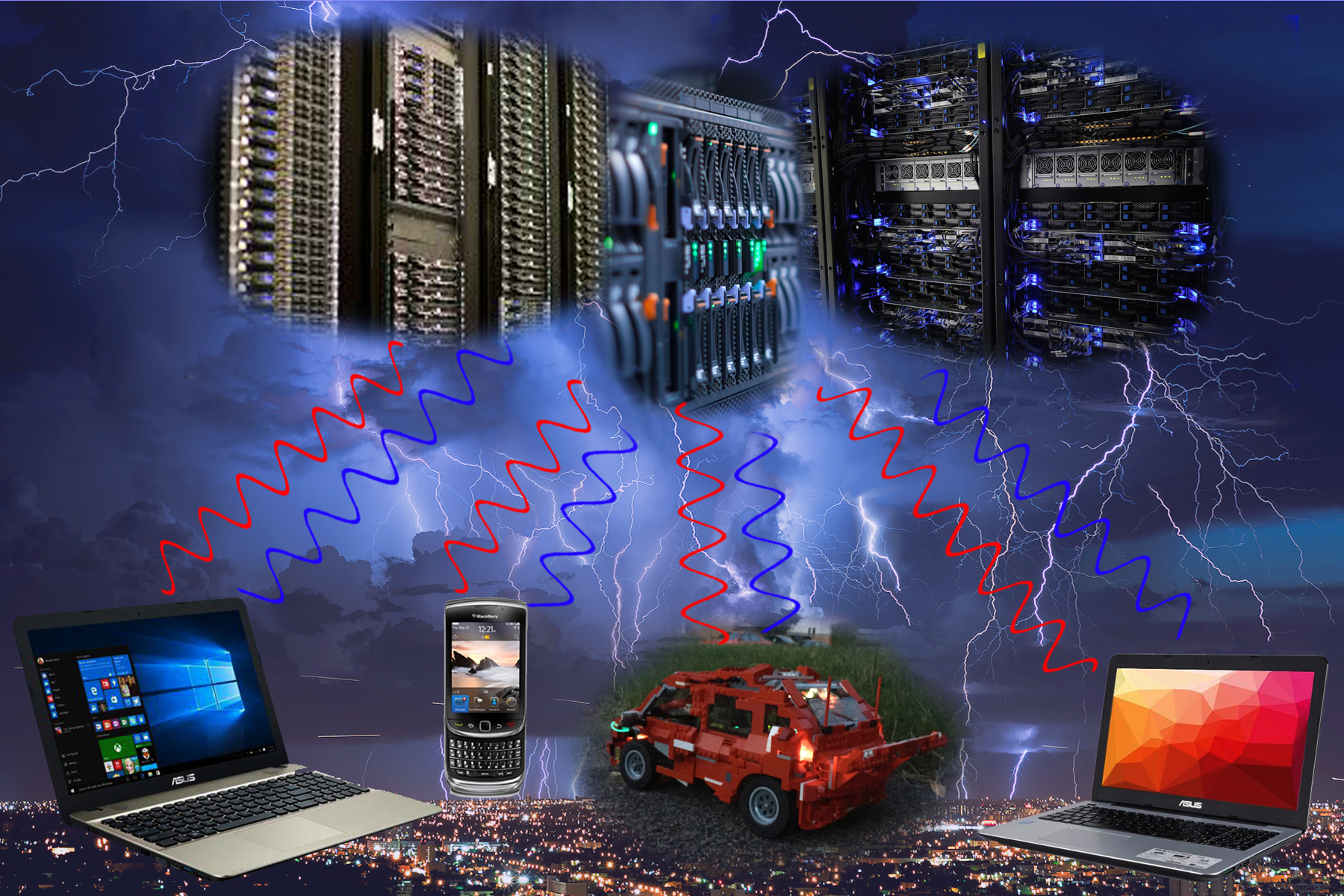Cloud Computing
Exploration and Presentation
Cloud computing is when computations occur in the cloud (the internet).
The official definition is more complicated.

This diagram illustrates the basic concept behind cloud computing: Devices send instructions to data centers, the servers calculate and compute, then the servers send results back to the device.
In this diagram, the large servers in the upper section collectively represent the "cloud," where heavy computing occurs. The user devices are positioned close to the ground.
You can hover your mouse over sections of the diagram to view some labels.
The red lines represent instructions transmitted from the user device, to the central server.
The blue lines represent results transmitted from the central server back to the user device.
There are different types of cloud computing, including edge computing, where resources are taken from many devices, leading to a "mesh" of interconnected things.
Benefits:
- Specializations leads to increased productivity
- Companies and organizations have less need to worry about hardware requirements, computer infrastructure etc...
- The information stored is shared, accessible...
- Economies of scale; centralization / decentralization (edge computing)...
There are three broad categories of cloud computing services: SaaS, PaaS, and IaaS.
| Acronym | Name | Description | Features | Examples |
|---|---|---|---|---|
| SaaS | Software as a Service | The customer uses other people's applications that have already been developed. | Hosted applications | Google Drive, Microsoft Azure, Cloudflare, Salesforce |
| PaaS | Platform as a Service | For developing your own applications: provides hardware, runtimes, network management, simplify code-writing; | Development tools, database management, business analytics, operating systems | Google App Engine, Rackspace, Amazon Web Services |
| IaaS | Infrastructure as a Service | The consumer is provided access to fundamental computing resources, and is able to run any software. | Storage, networking firewalls/security, data center physical building | Google Compute Engine |
To view some more comprehensive definitions of these three services, visit the "Services" section of the Resources page.
- Homepage - Cloud Computing & Virtualization
- Cloud Computing
- Virtualization
- Resources
- Close this menu
- AgentX Industries - 2017